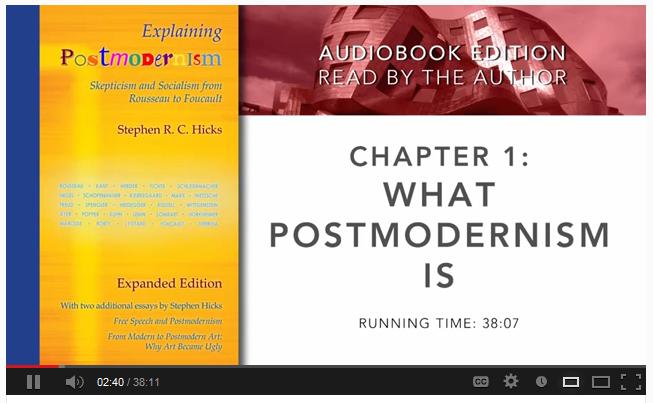Historically, “right wing” and “left wing” came into use in late 18th-century France, designating seating positions in the Assembly during the early stage of the Revolution. Birds of a feather flocked together. The “right wing” was animated in its opposition to the Enlightenment, whose philosophes had risen to prominence and were poised to transform society radically. I like professor Darrin McMahon’s essentialization of the “emergent right-wing vision”:
“The fundamental importance of religion in maintaining political order, a preoccupation with the perils of intellectual and social license, the valorization of the family and history, the critique of abstract rights, the dangers of dividing sovereignty, and the need for a strategic alliance between throne and altar—these all featured centrally in this new ideology.”*
Darrin McMahon, Enemies of the Enlightenment: the French Counter-Enlightenment and the Making of Modernity (New York: Oxford University Press, 2001), p. 14.
Let’s put those elements in a table:
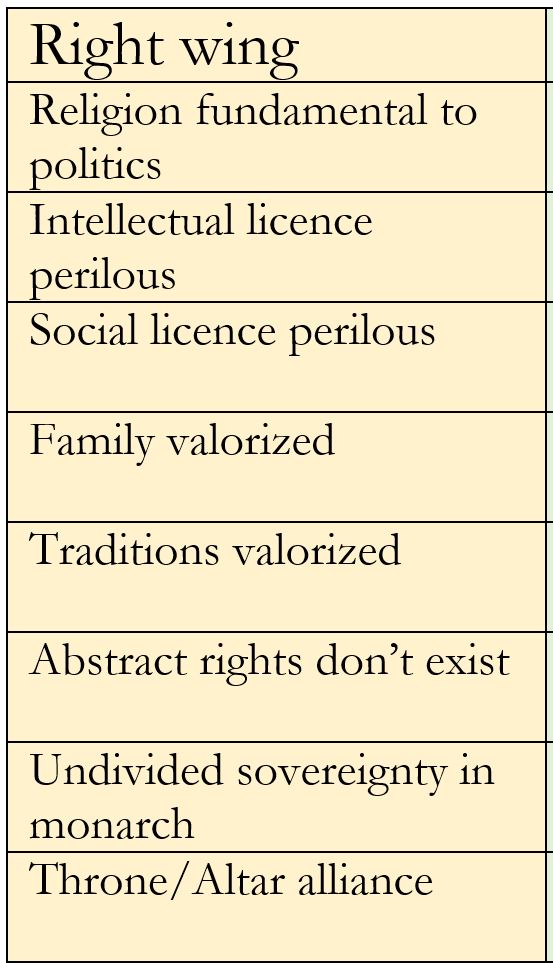
We can then juxtapose the “left wing,” as it emerged and evolved over the next century, yielding this contrast:
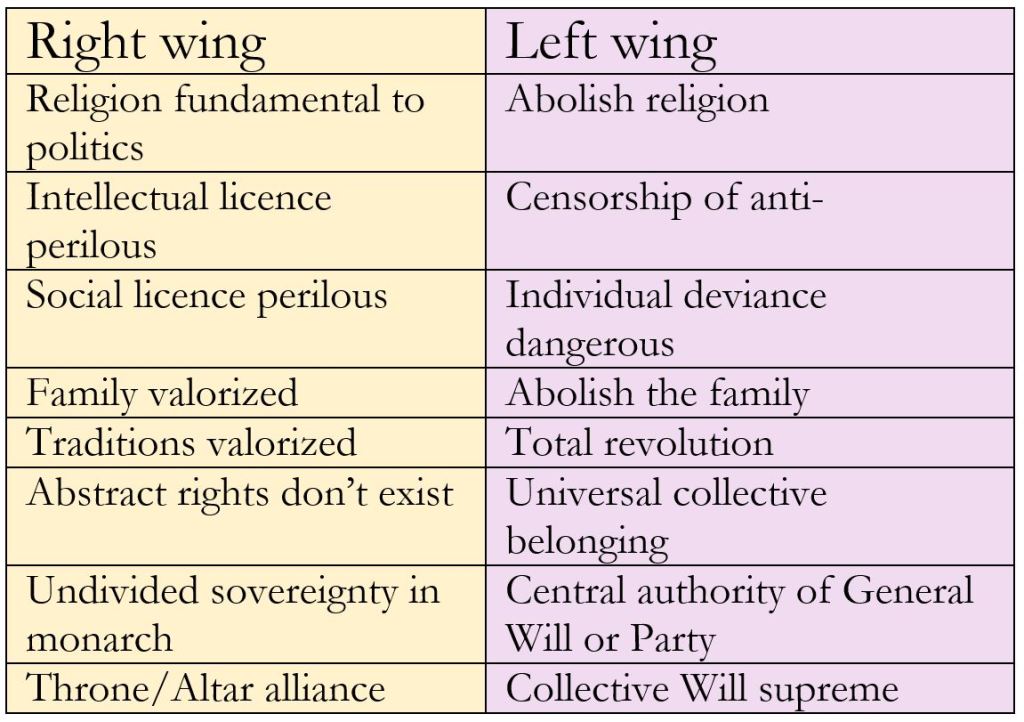
That captures the Anti-Enlightenment of those conservative, usually religious, traditionalists (e.g., Abbé Beauregard) as well as the anti-Enlightenment of those revolutionary proto-socialists (e.g., Rousseau).
Yet we can also contrast the “right wing” to the Enlightenment liberals (e.g., Lafayette), whose ideals were also manifesting in France and, more strongly, in the new United States of America:
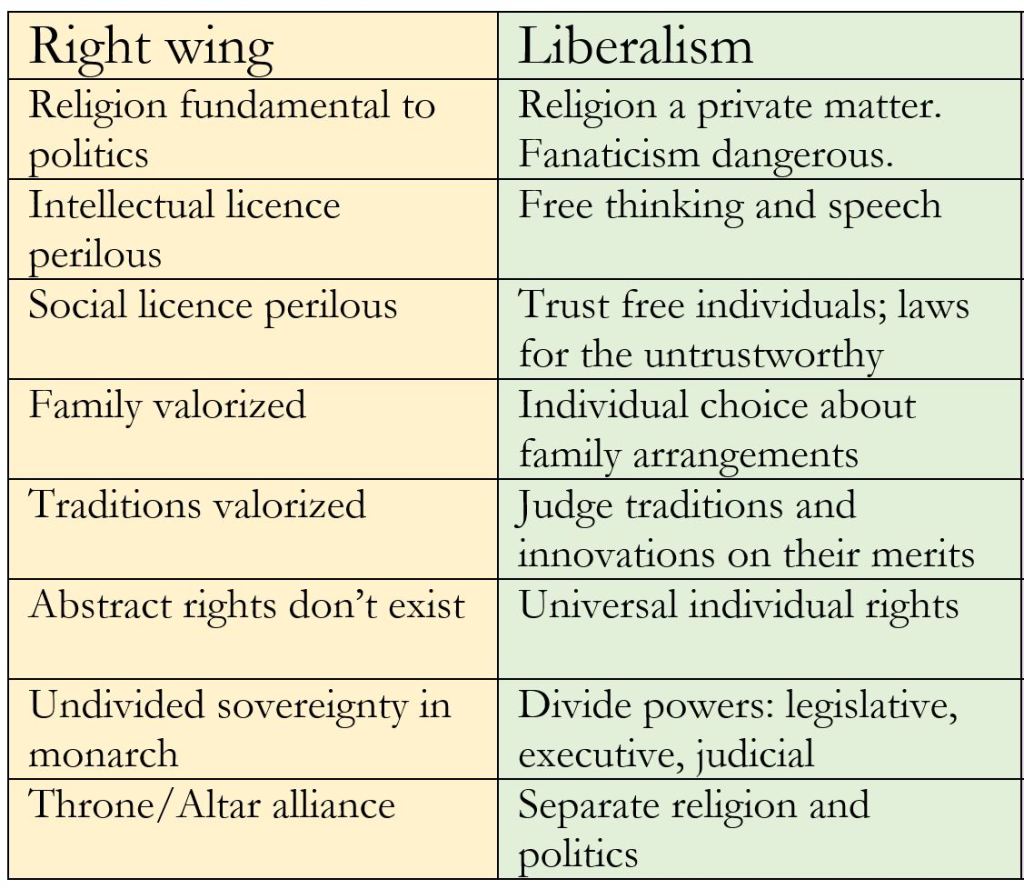
Thus we get the modern three-way debate and fighting:
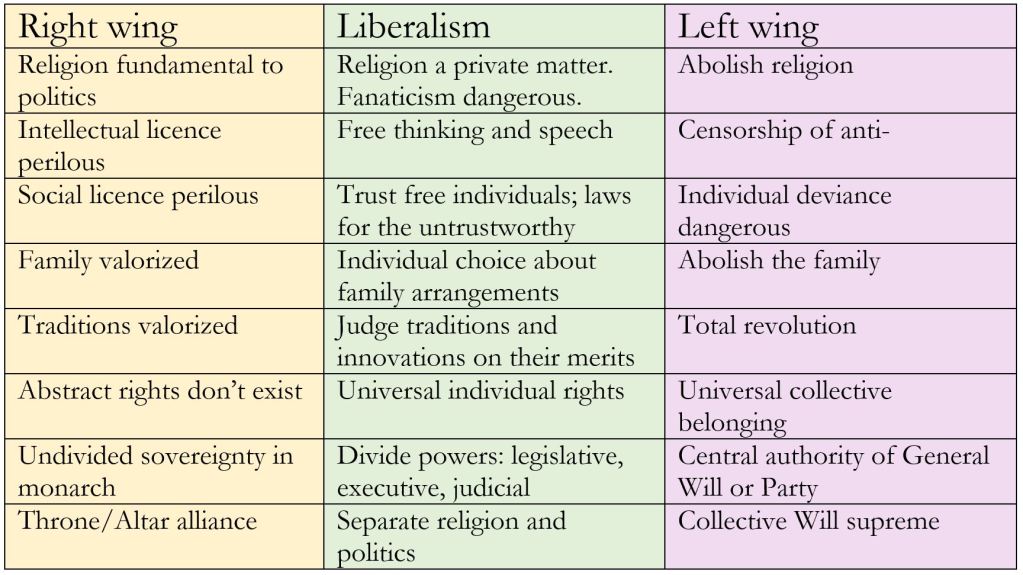
Politically, genuine Liberalism is opposed by both Right and Left.
Historically, the Enlightenment faced two Counter-Enlightenment ideologies.
Philosophically, Modern philosophy is in contrast to Pre-Modern and Post-Modern philosophies.
